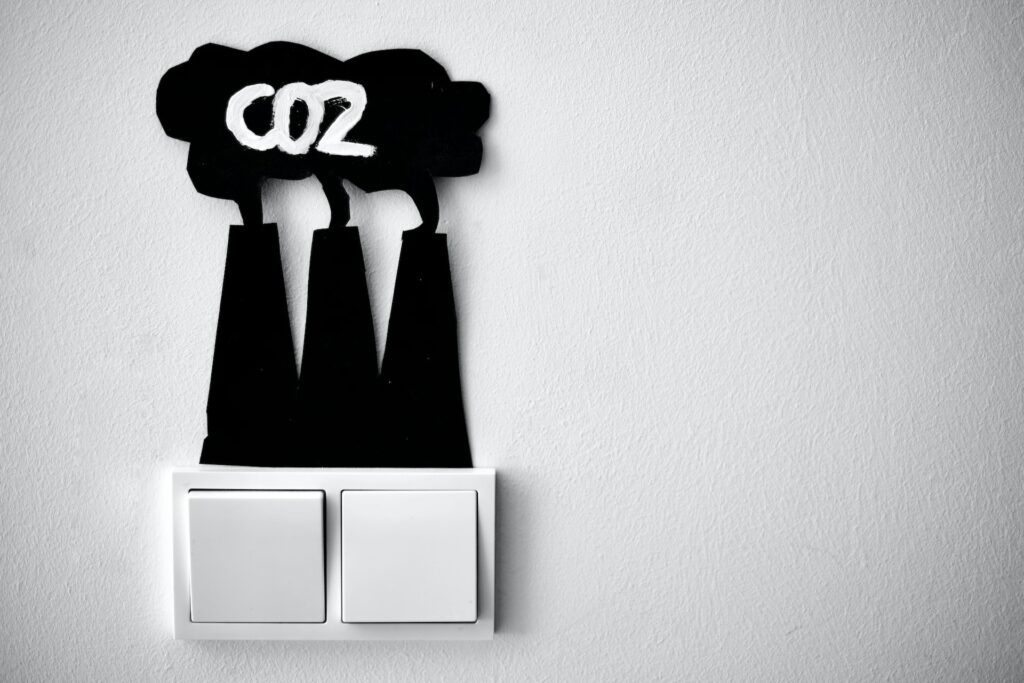Introduction – Effectiveness Of Carbon Offsets
Are carbon offsets effective? We think ultimately yes, if you take our steps below to validate and measure the impact. Carbon offsets can be used well or abused. Sometimes the best way to reduce your carbon footprint is to fund projects elsewhere that will have an equivalent effect. This is often controversial. The reason is that people have different motivations and thus the quality of the project may not be as advertised. Get a carbon offset for yourself or consider giving it as a gift to someone else. For more conventional gifts we have also created an eco-friendly gift guide for men, women and kids.

Local farm animals are a type of carbon offset
First, What Is A Carbon Offset
To know are carbon offsets effective, it’s useful to know what they are first. A carbon offset is a unit of measurement that denotes the reduction of greenhouse gas emissions. One carbon offset represents the avoidance of one metric ton of carbon dioxide or its equivalent in other greenhouse gases. Carbon offsets can be used to offset emissions from a variety of sources, including transportation, manufacturing, and power generation. Carbon offsets can be purchased from offset providers, which use the money to finance projects that reduce greenhouse gas emissions.
The most common type of carbon offset is the voluntary offset, which is purchased by individuals and businesses to offset their own emissions. Voluntary offsets are not regulated by any government and are not required by law. Another type of carbon offset is the regulated offset. Regulated offsets are created by government programs designed to reduce greenhouse gas emissions, such as the European Union Emissions Trading Scheme.
Offsets are traded in a carbon market, and the price of offsets is determined by supply and demand. Carbon offsets can be used to achieve a number of different objectives, including reducing greenhouse gas emissions, supporting renewable energy projects, and offsetting the carbon footprint of an individual or business.
Yes, Use Carbon Offsets To Cut Your Footprint
Most studies show that people who use carbon offsets are the ones who are already doing the most to cut their own emissions. Offsets have often been equated to medieval indulgences. This is because in theory offsets allow someone to feel good about carbon emissions but otherwise does little to cut down on a personal big footprint. However, offsets can be used well to cut carbon over and above your own footprint. The good news is that the quality of projects continue to improve. The alternative is a less efficient, expensive abatement option that has less effect.
Consider Whether Its Easier To Cut Your Footprint Vs Paying For An Offset
My own carbon footprint has decreased by around five tons recently. I could spend thousands of pounds going fully electric and storing my solar electricity. Or, I could spend a small fraction of that money and make a much bigger difference somewhere else in the world. When we look at the opposite indicators, I’ll always say that half of emission reductions are purchased if demonstrated things like leadership and corporate social responsibility.
High Quality Carbon Offsets Are Measureable
Good quality carbon offsets demonstrate a few criteria: the offset should be a real emissions reduction, that reduction should be measured against a baseline, the offset should be additional (meaning the project wouldn’t have occurred without the offset funding), and the offset should be permanent.
Low Quality Carbon Offsets Are Basically Scams
There’s no need to pretend that there’s no scammy stuff going on in the carbon offset market. Here are a few examples of totally fake carbon offset schemes.
Example 1 of an offset scam: An organization proposes that they will plant a million trees to offset carbon. You or a company put money into the project, for example for a certain number of dollars according to a certain number of trees because each tree acts as a carbon sink. The money is transferred to the organization. Then the trees are never planted but you get “proof” in the form of certificates that your money was used to plant the trees. In the end, at best you feel good about yourself for having contributed to an offset but at the worst you perpetuated a scam by funding it and no carbon reduction took place.
Example 2 of an offset scam: A power company in a low income country is selling carbon offsets for a new renewable energy plant that they will build. The renewable energy will generate electricity without the burning of fossil fuels, one of the major sources of carbon emissions. You or a company invests in the carbon offsets that go toward building the plant. You find out later that the company already had funding for the electric plant and it would have gone ahead and built it anyway even without the money you paid for the carbon offset. At best you felt good about this but at worst valuable investments went into something that had zero impact because the power company would have done the same even without your investment.
These examples make clear that the answer is not always to the question of are carbon offsets effective.
Use Third Party Verification For Assessing Quality Of Carbon Offset Project
From these examples, we learn then that without a market mechanism where you can in the end verify the product via customer satisfaction or sales it’s easy to fall into a trap. To know are carbon offsets really effective, you need a verification system. Therefore, the easiest way to make sure you’ve got all the bases covered is to go for a project that’s verified by a solid third-party.
Highly recognized third-party standards are the verified carbon standard (VCS) and Gold Standard, as we indicate below. You can not only find certification for these projects, but also have a chance to browse their market place and invest in these carbon offsets. On top of choosing a project that’s real, measured, additional, and permanent, you should get something that you like and want to support. That means the social and environmental goals that you’re after, personally.
Nevertheless we should not be under any illusion that the verified markets are free of scams. An old ProPublica story in 2019 pointed out that one of the Verra deforestation projects saw the project area go from 90% forested to 0% forested and yet the credits were still being sold. Moreover, the project administrators hadn’t filed a report in 5 years. Following these revelations the project was put on hold in the Verra database.
Verra / VCS – Verified Carbon Standard
The Verified Carbon Standard (VCS) is a voluntary, industry-independent carbon accounting scheme that has been designed to measure, certify and reduce greenhouse gas emissions.
[Note: June 6, 2023, Verra has come under fire for certifying phantom carbon credits and the controversy has not been resolved yet]
Gold Standard
The Gold Standard is an international certification system that provides a guarantee that certified carbon offset projects lead to real, permanent and additional greenhouse gas emission reductions.
Green-e
Green-e is a certification and verification program for renewable energy and carbon offsets. As they write on their own website:
As a third-party certifier, Green-e® doesn’t sell renewable energy or offsets, but offers these links to retailers that do.
Use The Certified Marketplace To Identify and Invest In A Carbon Offset Program
The certification companies link to or feature the offset programs that you can buy and invest in. For example Gold Standard hosts a Gold Standard Marketplace where it shows all the projects, the cost of buying a carbon offset.
An example of a real program is a solar panel project that aims to reduce carbon emissions by turning on a renewable energy source through new solar panels. Each one of these panels is equivalent to a certain amount of CO2 not being used, and therefore factors into your investment.
Cookstoves To Hydro: Possibilities Are Broad
Regarding specific projects, you have choices between small products to big infrastructure projects. For a small products one example I really like are Clean Cookstoves in Tanzania. While there, I saw they reduce indoor air pollution and positively impact rate of deforestation. In addition, they cut down on carbon dioxide emissions and black carbon emissions. Did you know 93% of the energy from burning wood is lost in inefficient cookers?
For big infrastructure projects, one of the most encouraging developments in offsets has been a shift away from things like methane and large hydro. Instead, offsets have instead turned to better projects like reduced deforestation and clean coal stoves.
Conclusion – Are carbon offsets effective?

Offsets will continue to be controversial. However, I think that if you have the right motivation and your project is covered by a good standard, then you’re on the right track. Tomorrow, we’ll be looking at planting trees that suck.
Back to the 30 day Shrink guide: Introducing the Shrink
Lindsay Wilson
I founded Shrink That Footprint in November 2012, after a long period of research. For many years I have calculated, studied and worked with carbon footprints, and Shrink That Footprint is that interest come to life.
I have an Economics degree from UCL, have previously worked as an energy efficiency analyst at BNEF and continue to work as a strategy consultant at Maneas. I have consulted to numerous clients in energy and finance, as well as the World Economic Forum.
When I’m not crunching carbon footprints you’ll often find me helping my two year old son tend to the tomatoes, salad and peppers growing in our upcycled greenhouse.
